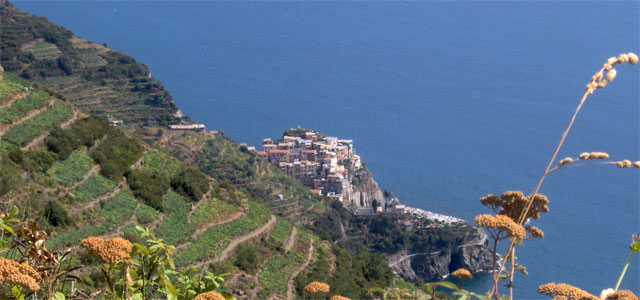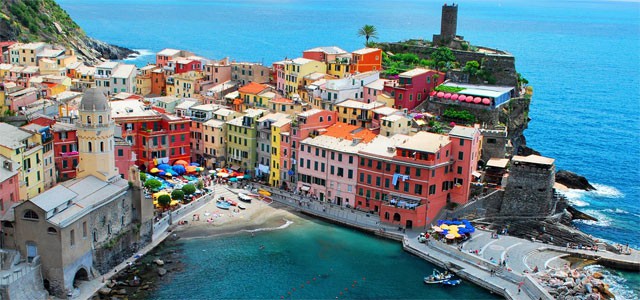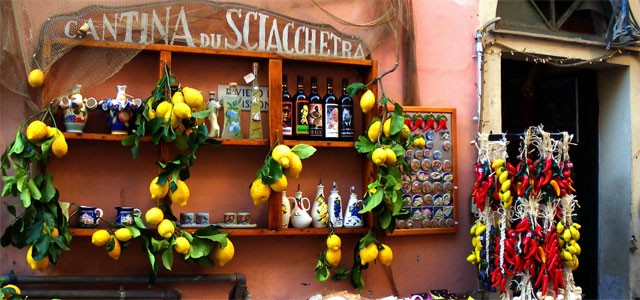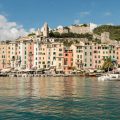
The Cinque Terre (literally, “five lands”) is an enchanting destination that stretches for 18 km along the rocky coast of Liguria, in northwestern Italy. The five ‘borghi’ (villages or hamlets) after which the area is named, are Monterosso al Mare, Vernazza, Corniglia, Manarola e Riomaggiore.
The local evocative landscape features bays, beaches and deep ocean floors, and is dominated by mountains that run along the coast. In-between you find the lush Mediterranean vegetation and the traditional ‘terraces’ cultivated with vineyards and olive groves.
A protected marine reserve and a national park safeguard the uniqueness and authenticity of the Cinque Terre, and the area was declared a UNESCO World Heritage Site in 1997. Let us have a look at the history of this destination, where many generations have worked to transform an inaccessible territory into a breathtaking, eco-friendly and stylish landscape.
The first historic documents regarding the Cinque Terre date back to the XI century, and mention Monterosso and Vernazza. The other towns grew during the hegemony of the Republic of Genoa. During the XVI century, the villages defended themselves from Turkish attacks by reinforcing ancient fortresses and by building new towers, which can still be admired today.

The Cinque Terre started declining around the 1600s, and remained relatively isolated until the XIX century, when a new railway was built to connect Genoa and La Spezia. However, poverty caused many locals to migrate abroad, a trend that continued until the 1960s, when the development of tourism brought the area back to the spotlight and wellbeing.
Over the centuries, Ligurians have carefully built terraces (locally known as “ciàn“) on the rugged, steep landscape right up to the cliffs that overlook the sea. These flat lands are supported by dry-stone walls, and host vineyards, vegetable gardens, olive groves, houses, mule tracks, flights of stairs and much more.
Tourism is the main economic driving force, and it has led to the disappearance of many traditional activities – such as fishing and agriculture. Nonetheless, the few remaining farmers enjoy and excel at producing quality olive oil and wines, thanks to the fact that the ciàn are protected from the northern winds and enjoy a sunny location.

The “Five Lands” produce two D.O.C. wines: the Cinque Terre, which is a delicate dry white wine that matches perfectly with fish dishes and local focaccia bread; and the Sciacchetrà, a passito sweet wine that is ideal for desserts. The latter has a very limited production, and is obtained from the white-wine grapes that are left to dry naturally on the racks for about two or three months.
Local food falls under the category of the historic ‘cucina povera’, which refers to the frugal genius of poor Italian fishermen and farmers who made the most out of gardens, forests and oceans to create their dishes. Fish is definitely the main protagonist of the local cuisine, above all anchovies, bream, bass, cuttlefish, octopus and calamari. Fresh, locally grown aromatic essences season the dishes, including oregano, thyme and marjoram.
And of course, the Cinque Terre – like the rest of Ligura – are known for the pesto! A delicious sauce made from basil leaves, garlic, salt, olive oil, pine nuts, parmigiano reggiano and pecorino cheese. Want the recipe? Have a look at this video by Giallo Zafferano, one of Italy’s leading cooking authorities on Youtube and the web!
Photo credits:
The ‘cian’ terraces and Manarola, photo by William Domenichini
The colorful village of Vernazza, image from incinqueterre.com
Lemons and Sciacchetrà wine, photo by lincemiope on pxleyes.com


